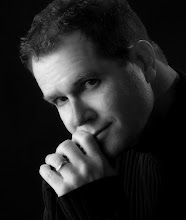Here are a couple of questions posed to me recently by a family member:
Memory cards - is there a best brand or are they pretty well all the same for quality?
 Stay with a name brand and you should be fine. The brands I’ve used are Lexar, SanDisk and Kingston and I’ve literally put thousands and thousands of images through these with out a single card failure that I can remember. From a preventative standpoint I do pitch them after about 2 years of use - maybe that’s why I’m so “lucky”. Every time I get a new card I write the date on the back of the card with a permanent marker (as seen in the photo here) so I’ll know when its time is up.
Stay with a name brand and you should be fine. The brands I’ve used are Lexar, SanDisk and Kingston and I’ve literally put thousands and thousands of images through these with out a single card failure that I can remember. From a preventative standpoint I do pitch them after about 2 years of use - maybe that’s why I’m so “lucky”. Every time I get a new card I write the date on the back of the card with a permanent marker (as seen in the photo here) so I’ll know when its time is up.If you ever do have an issue with a card, there are a variety of image recovery software products out there. If you keep your eyes out, some manufacturers package their versions of this kind of software with their cards. I’ve gotten SanDisk and Lexar’s version at no charge this way. If you ever format a card (“erase” it) with images on it before you have a chance to download it, image recovery software will be your knight in shining armor!
What do you think is the best long-term storage for these digital files, so years from now I don't have a mess and they will still all be viewable?
So your options are basically:
- Leave your images on your hard drive. Not a great idea – you could end up with a drive full of photos with no room left for anything else – that is if it doesn’t crash first.
- Burn them to CDs/DVDs. When I first made the switch to digital I went this route. Boy, what a hassle. The time it took to burn the CD/DVDs, file them, retrieve them later, etc., I’m glad I’m past that now. Add to this the arguments of short life span & the potential short life of the technology (hello, VHS?) - pass on this option, believe me.
- Upload to an online/offsite storage service. Do you really want to trust a DotCom somebody in who-knows-where with your precious work? Not me.
- And finally, external hard drives. This is what I’ve been using for over 3 years now and here’s why:
They’re easy to use. Plug ‘em in to a spare USB or FireWire port & you’re ready to upload tons of images. Your photos will be there whenever you need them and you won’t have to go looking through pages of CD’s to find that one photo of Uncle Frank that everyone wants.
They’re cheap. For the amount of storage you get, it’s crazy how low the prices on these things have dropped.
They’re reliable. I own nearly 20 of these things and have had only one ever go south on me. That being said, they are capable of failing (everything is for that matter) which is why the next point is important:
They’re easy to back up. Whatever your method of archiving, you need some kind of redundancy. Hey, if it’s good for NASA, it’s good for me. I’ll discuss in detail in a future blog how I organize and archive my images, but here’s a preview: While a job is still active (the finished photos haven’t been delivered to the client yet) I’ll have copies of those images on my main hard drive and on 2 separate external hard drives.
Keep it secret, keep it safe. Good advice for getting the One Ring to Mordor AND for protecting your images. Whenever I’m away from my main computer, one of those two external drives I mentioned goes in a waterproof, shockproof case that gets stored in a separate location. Again, I’ll share more on that in a future blog.
If you’re saying to yourself by now, “wow, that Bret guy is really paranoid”, you could be right or it could just be me protecting my livelihood. Either way, I’m gonna have all my images at the end of the day and I hope you’ll still have yours too. I may need that photo of Uncle Frank some day.
One last thing on external hard drives – they come in basically 3 different flavors:
The small, portable variety that gets powered off your USB or FireWire port (I love my LaCie Rugged Hard Disks, pictured here. When I travel, I have two that go with me).
The larger book-sized type that requires an AC adapter to power them (Western Digital’s My Book series are a good value & have worked great for me).
The multi-hard drive RAID versions like Drobo’s (This is going to be my next external drive purchase!).
More on the pros/cons of these 3 later but in the mean time, if you’ve used one or more of these, how did they work out for you?


